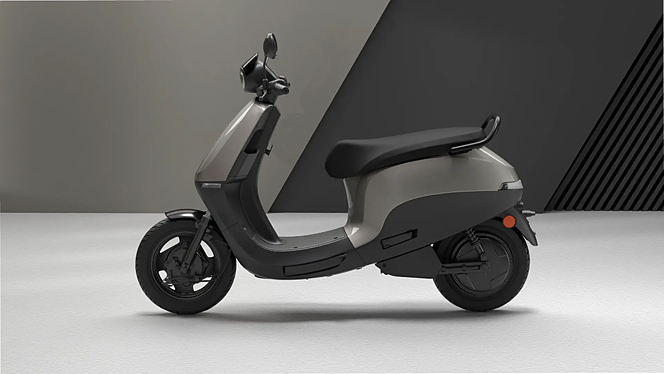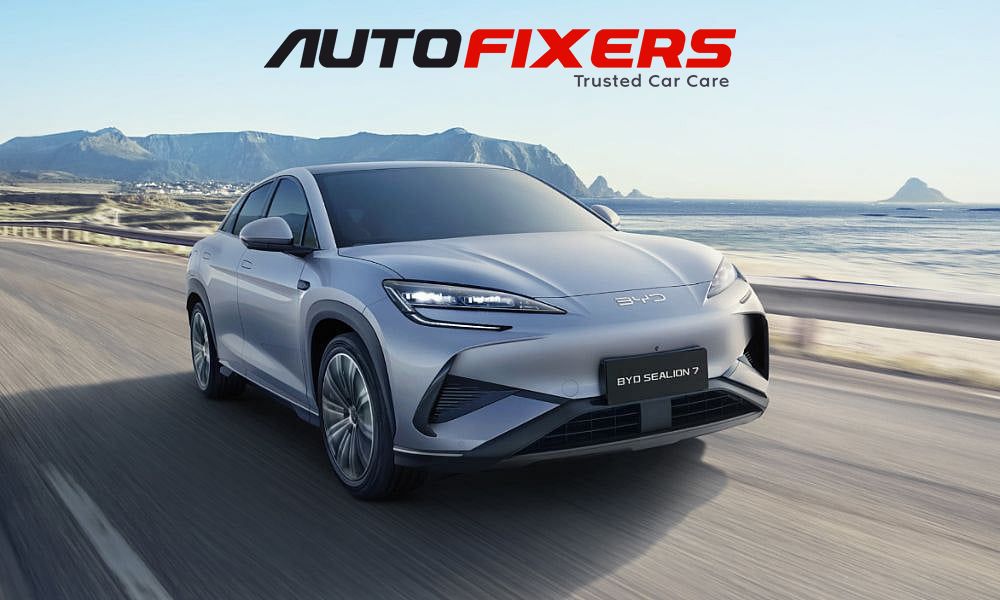Two years ago, we evaluated the petrol-automatic variants of the Hyundai Exter and Tata Punch, with the Exter showcasing a superior powertrain. Now, we return to this rivalry, focusing on their CNG versions. Both sub-compact SUVs feature a dual-cylinder CNG setup, a claimed efficiency of 27 km/kg, and high-end amenities such as a sunroof. However, this comparison highlights their real-world efficiency.
Tata Punch CNG vs Hyundai Exter CNG Interior and Ergonomics
The Punch stands out as one of the bestselling cars in India, and for good reason. Its design checks all the right boxes—offering a high-riding stance, wide-opening doors, and easy entry, which especially caters to older passengers. The elevated seating position grants a commanding view of the road, enhanced by the visible edges of the bonnet that give drivers a sense of control. Driving the Punch is made easier with light steering, straightforward gear shifts (though not as precise as those in the Exter), and a forgiving clutch. Additionally, individual front armrests boost comfort during long drives, and the vehicle houses an impressively robust audio system.

Switching to the Hyundai Exter, it’s evident why it has garnered positive feedback for its user-friendliness. Every control, from the gearbox to the steering, offers a lighter, more refined touch—ideal for urban settings. While the seating position is slightly lower than that of the Punch, visibility remains excellent, largely due to its lower window line. The overall cabin quality, fit, and finish are marginally superior compared to the Tata, but the darker monotone interior feels less inviting, and the seats could use more support than they currently provide.
Tata Punch CNG vs Hyundai Exter CNG Engine and Performance
Engine performance has never been a highlight for the Punch, and in its CNG form, it feels even more sluggish. While it can keep up with city traffic, it tends to struggle under more demanding conditions. The real asset of the Punch lies in its stability on the highway; it remains steady and reassuring in speed, a notable advantage over the Exter.
| Tata Punch CNG vs Hyundai Exter CNG Specs | ||
|---|---|---|
| Tata Punch CNG Accomplished + S | Hyundai Exter Hy-CNG Duo SX Tech | |
| Dimensions (L/W/H) | 3827/1742/1615mm | 3815/1710/1631mm |
| Wheelbase | 2445mm | 2450mm |
| Boot Capacity | 210 litres | N/A |
| Engine | 3-cylinder, 1199cc Petrol + CNG | 4-cylinder, 1197cc Petrol + CNG |
| Power Output | 73.5hp at 6000rpm | 69hp at 6000rpm |
| Torque | 103Nm at 3250rpm | 95.2Nm at 4000rpm |
| Kerb Weight | 1181kg | 1093kg |
On the move, the Exter showcases remarkable refinement. Its 4-cylinder engine runs quietly and willingly revs, delivering a notably smooth experience. With its shorter gearing and intelligent engine calibration, gear shifting becomes infrequent, as it pulls smoothly from as low as 1,000rpm, making it perfect for stop-and-go traffic. In our acceleration tests, the Exter Hy-CNG Duo reached 100 kph in merely 14.85 seconds, outperforming the Punch iCNG by a full three seconds. Furthermore, the Exter excels in acceleration from 20 to 80 kph in third gear and from 40 to 100 kph in fourth gear compared to the Tata model.

However, the Exter lacks the composure of the Punch on highways, exhibiting increased vertical movement over uneven surfaces. Also, its engine operates at 3,300rpm while cruising at 100 kph, which is 300rpm higher than the Punch’s. Consequently, its highway efficiency is slightly lower at 30.3 km/kg compared to the Punch’s 31 km/kg. Nevertheless, the Exter performs better in urban environments, achieving 22.8 km/kg, well above the Tata’s 20.7 km/kg. Overall, both vehicles impress with their average efficiencies, which are close to the claimed 27 km/kg figures.
| Tata Punch CNG vs Hyundai Exter CNG Performance and Efficiency | ||
|---|---|---|
| Tata Punch CNG | Hyundai Exter CNG | |
| Acceleration from rest | ||
| 20kph | 1.60 sec | 1.54 sec |
| 40kph | 4.05 sec | 3.63 sec |
| 60kph | 7.05 sec | 6.55 sec |
| 80kph | 11.59 sec | 10.39 sec |
| 100kph | 17.85 sec | 14.85 sec |
| 120kph | 27.87 sec | 22.69 sec |
| Rolling acceleration | ||
| 20-80kph | 16.01 sec | 13.02 sec |
| 40-100kph | 22.80 sec | 18.35 sec |
| Efficiency (Tested) | ||
| City | 20.7 km/kg | 22.8 km/kg |
| Highway | 31.0 km/kg | 30.3 km/kg |
Tata Punch CNG vs Hyundai Exter CNG Fuel Efficiency

To gauge their actual fuel efficiency, we conducted a straightforward test. We first drove both vehicles until their CNG tanks were depleted. We then refilled each vehicle with approximately 2 kg of gas and drove them under real-world conditions in the city until the CNG ran out again. This procedure was repeated in highway conditions. Since it’s nearly impossible to fill the exact same amount of gas into both cars, efficiency was calculated based on the actual distance traveled divided by the gas quantity used.
Tata Punch CNG vs Hyundai Exter CNG Features and Safety
The Tata Punch used in this comparison is the Adventure + mid variant, while the Hyundai Exter is the high-end SX trim. For a fair assessment, both vehicles are evaluated based on their respective top spec versions. Notably, Tata provides a wider range of variants for the Punch iCNG. Its base trims are more budget-friendly compared to the Hyundai’s CNG offerings, although its upper trims are more expensive than the Exter.

The Punch iCNG stands out with features such as cruise control and a large 10.25-inch touchscreen that the Hyundai lacks. However, the Exter compensates with important safety features like six airbags, a tyre-pressure monitoring system, hill-start assist, and electrically folding mirrors, all of which are not present in the Punch.
| Tata Punch CNG vs Hyundai Exter CNG Features | ||
|---|---|---|
| Tata Punch CNG Accomplished + S | Hyundai Exter Hy-CNG Duo SX Tech | |
| Alloy Wheels | No | No |
| Projector Headlamps | Yes | Yes |
| Sunroof | Yes | Yes |
| Power Folding Mirrors | No | Yes |
| Touchscreen | 10.25-inch | 8-inch |
| Android Auto, Apple CarPlay | Wireless | Wireless |
| Auto Climate Control | Yes | Yes |
| Wireless Charging | No | No |
| Ventilated Seats | No | No |
| Rear AC Vents | Yes | Yes |
| Rearview Camera | Yes | Yes |
| Cruise Control | Yes | No |
| Hill-start Assist | No | Yes |
| Tyre Pressure Monitor | No | Yes |
| ESP | Yes | Yes |
| Airbags | 2 | 6 |
Both vehicles employ dual CNG cylinders strategically placed below the boot floor, which inevitably affects cargo space compared to their petrol-only brethren. Still, the Punch offers a more practical boot, particularly if both cars have their parcel shelves removed. Notably, Tata includes a full-size spare tyre, whereas the Exter comes equipped only with a tyre repair kit.
Tata Punch CNG vs Hyundai Exter CNG Verdict

In conclusion, the Tata Punch iCNG serves as a strong option for those seeking a compact, economical, and practical vehicle suitable for highway travel. Its durable construction, raised seating position, and impressive audio system enhance its attractiveness. However, its limitations lie in performance and the absence of key safety features such as hill-start assist, tyre-pressure monitoring, and additional airbags. Meanwhile, the Hyundai Exter shines as a smoother, more refined, and easier-to-handle vehicle in urban settings. It not only offers superior fuel efficiency and an array of safety features but also manages to come in at a better price point, despite offering more equipment overall. While it may not dominate sales yet, the Exter appears to be the more well-rounded choice in this comparison.





